Prometryn
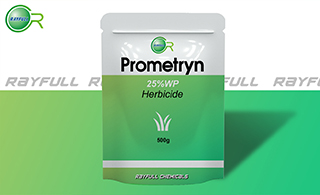 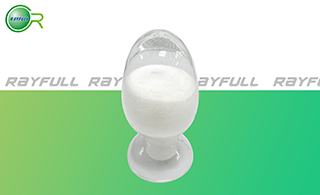 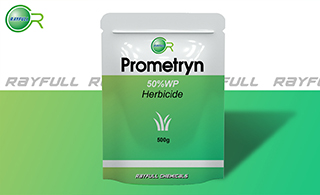 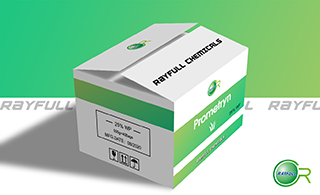 ЖЛІЭҫ» ЖЛІЭҫ»
Introduction: Prometryn is a methylthiotriazine herbicide used for the control of several annual grasses and broadleaf weeds. Prometryn works by inhibiting the electron transport in target broadleaves and grasses.
Common name: Prometryn
Another name: Prometryne; Selectin; Gesagard; Prometrex; etc.
Chemical name: N2,N4-diisopropyl-6-methylthio-1,3,5-triazine-2,4-diamine
Empirical formula: C10H19N5S
Structural formula:
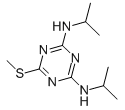
Mol. Weight: 241.36 g/mol
CAS No.: 7287-19-6
Specifications
Leading Prometryn supplier
Prometryn 90% TC
Prometryn 50% WP
Prometryn 25% WP
Packing:
BULK PACKING
Powder: 25kg/Bag, 25kg/Drum, 50kg/Drum etc.
Liquid: 200L/Drum, 20L/Drum, 10L/Drum etc.
SMALL PACKING
Powder: 1kg/Alu bag, 500g/Alu bag, 200g/Alu bag, 100g/Alu bag, 50g/Alu bag, 15g/Alu bag etc.
Liquid: 5L/Drum, 1L/Bottle, 500ml/Bottle, 250ml/Bottle, 100ml/Bottle, 50ml/Bottle etc.
Customerized packing label
Prometryn FAO standard
Professional registration
HAZARDS IDENTIFICATION
Hazard statement(s)
H332 (28.57%): Harmful if inhaled.
H400 (100%): Very toxic to aquatic life.
H410 (71.43%): Very toxic to aquatic life with long lasting effects.
Precautionary statement(s)
P261: Do not breathe dust/fume/gas/mist/vapors/spray.
P271: Use only outdoors or in a well-ventilated area.
P273: Avoid release to the environment.
P304+P312: IF INHALED: Call a POISON CENTER/doctor/... if you feel unwell.
P304+P340: IF INHALED: Remove person to fresh air and keep comfortable for breathing.
P312: Call a POISON CENTER or doctor/... if you feel unwell.
P391: Collect spillage.
P501: Dispose of contents/container to an approved waste disposal plant.
Supplemental Hazard Statements: none.
MAMMALIAN TOXICOLOGY
Acute toxicity: 1) Acute oral LD50 for rats is >2000 a.i.mg/kg. 2) Acute dermal LD50 for rats is >3170 a.i.mg/kg. 3) Acute inhalation toxicity LC50 (4 h) for rats is >5.17 a.i.mg/L. 4) Skin irritation: Slightly irritating to skin (rabbits). 5) Eye irritation: Slightly irritating to eyes (rabbits). 6) Skin sensitization for guinea pig: Non-sensitizing.
NOEL: (2 y) for rats is 29.45 mg/kg/day; (2 y) for dogs is 3.75 mg/kg/day. Other Not mutagenic.
ADI 0-0.01 mg/kg b.w.
Classification:
WHO Classification: III (Slightly hazardous)
EC Risk Classification: N - Dangerous for the environment: R50/53
US EPA Classification (formulation): II, III (Warning - Moderately toxic, Caution - Slightly toxic )
ECOTOXICOLOGY
Effect on birds: Acute oral LD50 for Mallard is 2150 a.i.mg/kg. Effect on fish: Acute LC50 (96 h) for Rainbow trout is 5.5 a.i.mg/l. Effects on aquatic invertebrates: Acute EC50 (48 h) for Daphnia magna is 12.66 a.i.mg/l. Effects on algae: Acute 72 hour EC50 for Scenedesmus acutus is 0.002 a.i.mg/l. Effects on bees: contact acute 48 hour LD50 is 99 a.i.ҰМg/bee. Effects on earthworms: Acute 14 day LC50 is 153 a.i.mg/kg.
ENVIRONMENTAL FATE
If released to air, a vapor pressure of 1.24ЎБ10-6 mm Hg at 25Ўж indicates prometryne will exist in both the vapor and particulate phases in the atmosphere. Vapor-phase prometryne will be degraded in the atmosphere by reaction with photochemically- produced hydroxyl radicals; the half-life for this reaction in air is estimated to be 10 hours. Particulate-phase prometryne will be removed from the atmosphere by wet or dry deposition. Prometryne does contain chromophores that absorb at wavelengths >290 nm and therefore may be susceptible to direct photolysis by sunlight. If released to soil, prometryne is expected to have very high to slight mobility based upon a range of Kocs from 39.4 to 3,473. Volatilization from moist soil surfaces is not expected to be an important fate process based upon an estimated Henry's Law constant of 1.2ЎБ10-8 atm-cu m/mole. However, estimated half-lives for volatilization of prometryne from soil range from 41 to 60 days for shallow to deep placement and varying water evaporation rates. Half-lives for the biodegradation of prometryne in aerobic and anaerobic soil have been reported as 150 and 360 days, respectively. If released into water, prometryne is expected to adsorb to suspended solids and sediment based upon Koc values. Volatilization from water surfaces is not expected to be an important fate process based upon this compound's estimated Henry's Law constant.
Usage: Prometryn was introduced by J. R. Geigy S.A. (now Syngenta AG). Prometryn is a selective herbicide which controls annual grasses and broadleaf weeds in cotton and celery.
Application: Biochemistry Photosynthetic electron transport inhibitor at the photosystem II receptor site. Also inhibits oxidative phosphorylation. Mode of action Selective systemic herbicide, absorbed by the leaves and roots, with translocation acropetally through the xylem from the roots and foliage, and accumulation in the apical meristems. Uses Used pre-emergence, at 0.8-2.5 kg/ha, in cotton, sunflowers, peanuts, potatoes, carrots, peas and beans; post-emergence, at 0.8-1.5 kg/ha, in cotton, potatoes, carrots, celery and leeks. Phytotoxicity Used as a directed spray on cotton while young, to avoid foliar injury.
| 






